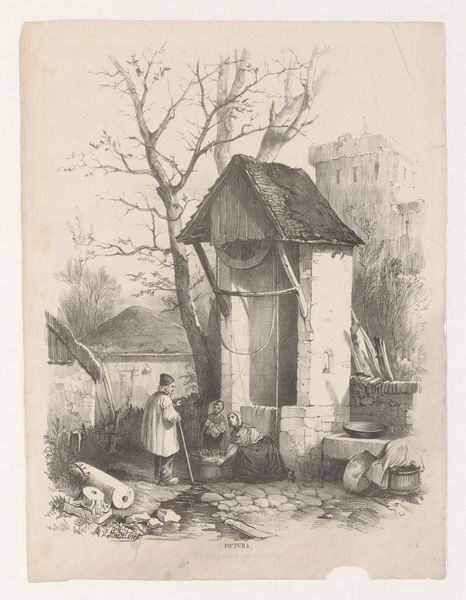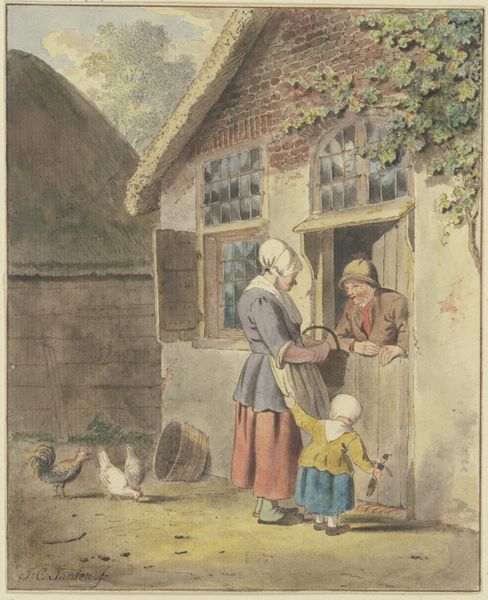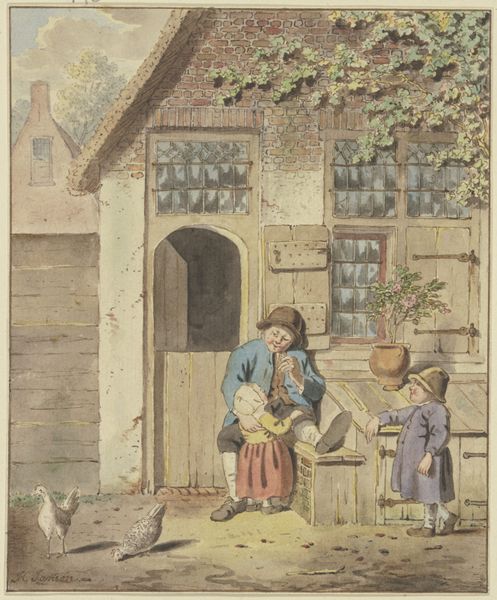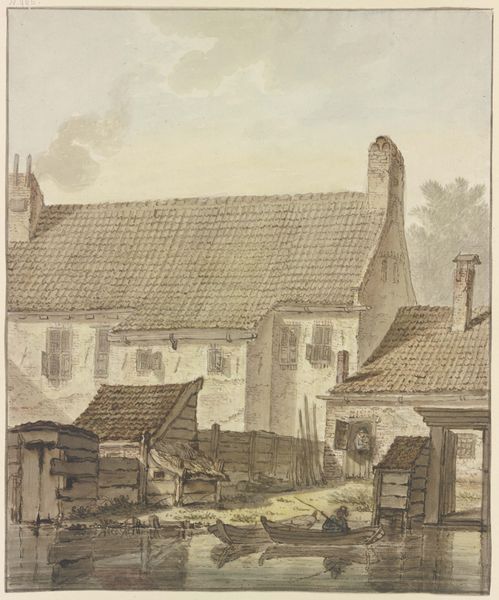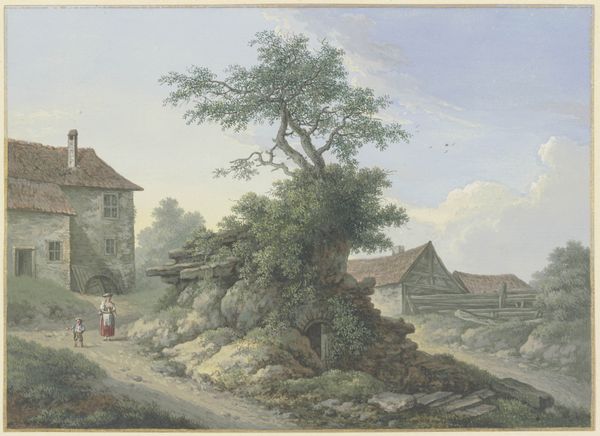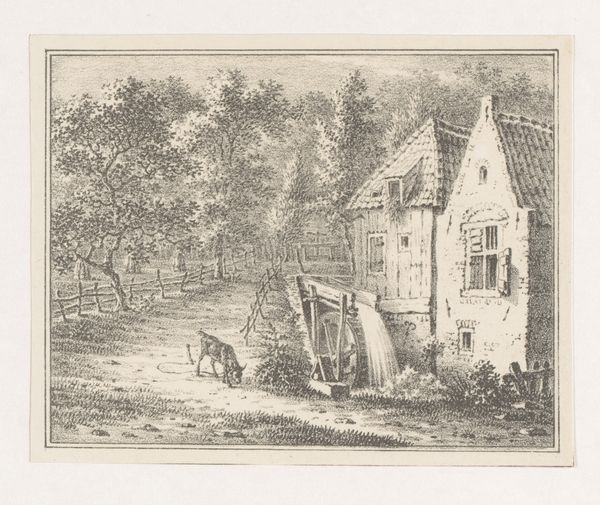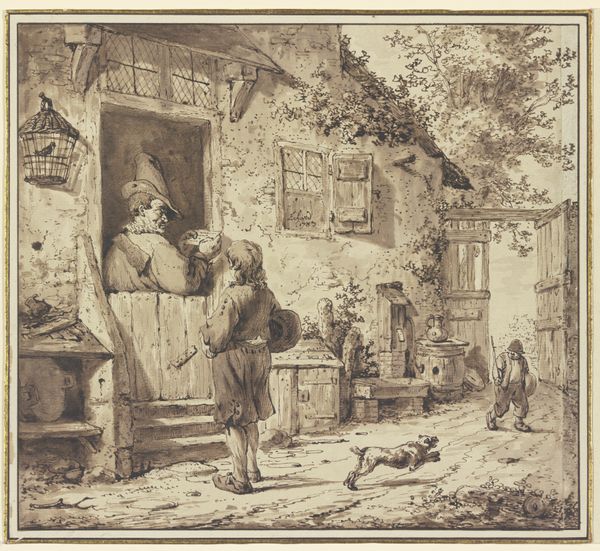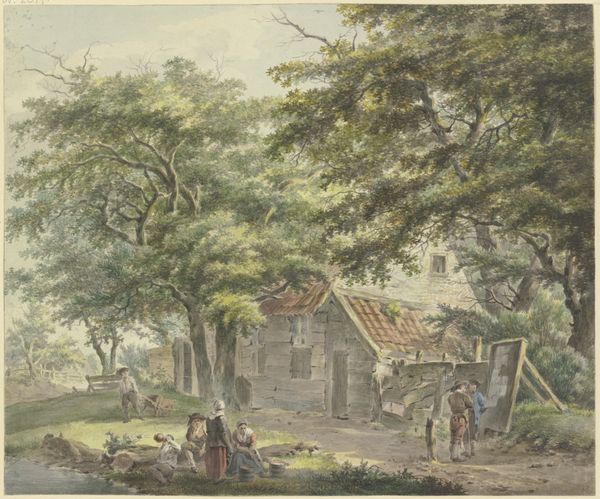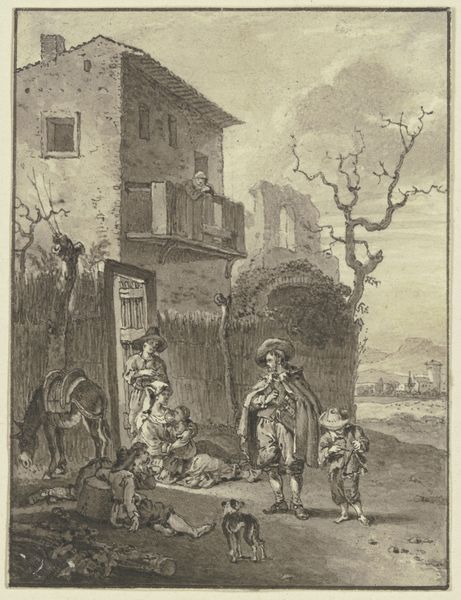
watercolor
#
water colours
#
dutch-golden-age
#
landscape
#
watercolor
#
genre-painting
#
watercolor
#
realism
Dimensions: height 298 mm, width 228 mm
Copyright: Rijks Museum: Open Domain
Curator: This watercolor, housed right here at the Rijksmuseum, is titled "Binnenplaats met een dienstmeid die schoonmaakt," which translates to "Courtyard with a maid cleaning." Carel Lodewijk Hansen likely created it sometime between 1775 and 1840. What strikes you first? Editor: It's quiet, almost ghostly, isn't it? The pale washes of color lend this courtyard an atmosphere of calm detachment. It's as if time has paused as this woman scrubs. Curator: The image definitely captures a very specific mood. Genre paintings, like this one, offer glimpses into everyday life, but they're often layered with subtle commentaries. What kind of cultural symbols do you read into it? Editor: The domestic sphere itself becomes symbolic here. Consider the hidden narratives of labor; she's eternally caught in the act of cleaning. And yet there's also something inherently pleasing in the geometrical arrangements – the angles of the buildings, the square of the water basin, even the lines of the cobblestone ground leading us toward the activity in the yard. There's this hidden harmony, don't you think? Curator: I completely agree! Think too about the Dutch fascination with domestic virtue during that period. Cleanliness was not merely practical, it was a signifier of moral character and societal order. The light seems almost to sanctify the work of her hand. Editor: But it also raises the question: is the artist idealizing, critiquing, or simply observing this "domestic virtue?" Her pose doesn't betray much. It's interesting that he leaves the narrative open, creating a moment of stillness that seems suspended. Curator: True. Hansen is working in watercolor which invites that sort of translucence and elusiveness of form. The details emerge gently; they don't shout at you, offering a kind of intimacy to the view. It reflects a deep tradition of Dutch realism. Editor: I’ll take with me today the subtle echoes of this image: labor elevated through light and shadow, an act mundane, imbued with some kind of quiet dignity. It's made me think, maybe cleaning can be kind of poetic, like watercoloring. Curator: And I think it reminds us that images from the past carry both aesthetic beauty and complex social meanings. There’s so much depth in such ordinary looking things.
Comments
No comments
Be the first to comment and join the conversation on the ultimate creative platform.
